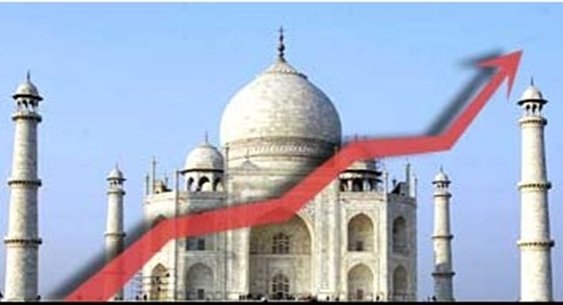The Finance Minister presented the Economic Survey 2008-09 in the parliament on July 2nd 2009. He expressed optimism that India could achieve 7.75 per cent GDP growth in 2009, and then return its previous 9 per cent plus showing from 2010, but only if significant financial reforms are enacted.
Experts believe that the Growth target of 7.75% is a very aggressive target given the current state of Global Economic Crisis. Finance Minister as set the agenda for a pro-reform budget and has has rightly stressed need for revisiting agenda for pending reforms with a view to renew the growth momentum.
We feel more hopeful that a larger number of our expectations with respect to a common man may be fulfilled in the Union Budget 2009-10, which is scheduled to be announced on Monday, July 6th, 2009.
What is Economic Survey?
The Finance Ministry presents the Economic Survey in the parliament every year, just before the Union Budget. It is the ministry’s view on the annual economic development of the country. The Economic Survey normally forms the backdrop for the Indian Budget.
In simpler words, Economic Survey can be termed as the Annual Report Card for the performance of the economy. It also sets a guidance for the performance of economy in the next year by broadly outlining the key policy measures.
Key Features of Economic Survey 2008-09
The survey presented a generally optimistic picture, saying that the economy was showing underlying resistance and domestic consumption will continue to rise, despite the Global Financial Crisis.
The Survey has expressed concern at the “sharp dip” in the growth of private consumption, from 8.5 per cent in 2007-08 to 2.9 per cent in 2008-09, which it has attributed to uncertainty in the labour market and the negative wealth effect of declining equity/property prices on spending.
The slowdown in private consumption has come along with the growth in gross fixed capital formation falling from 12.9 to 8.2 per cent. The slump in aggregate demand has been partially offset by government consumption.
Mr. Pranab Mukharjee also expressed the confidence that Indian Economy may grow @ 7% +/- 0.75% in 2009-10. Setting a range of 6.25% to 7.75% growth target for 2009-10.
- Economic growth decelerated in 2008-09 to 6.7 pct from 9 pct in 2007-08
- Fiscal deficit in 2008-09 shot up to over 6 pct from 2.7 pct in 2007-08
- Trade balance deteriorated to $119.05 bn from $88.52 bn
- Imports grew at 14.3 pct to $287.75 bn from $251.65 bn
- Exports grew at 3.4 pct to $168 bn in 2008-09 from $163 bn in previous fiscal year.
- Agriculture growth fell sharply to 1.6 pct in 2008-09 from 4.9 pct
- Economic growth @7-7.5% possible in 2009-10
- Stated that inflation was no longer a worry.
- Decontrol sugar and fertilizer industries.
- Convert producer subsidies into direct consumer subsidies.
- Allow 100% foreign direct investment (FDI) in health, weather insurance.
- Allow 49% FDI in defence & insurance; permit FDI in multi-format retail like food
- Lift price controls on all drugs, especially essentials.
- Introduce new income tax code.
- Rationalize dividend distribution tax (DDT); avoid double taxation.
- Phase out tax surcharges, cesses, transaction taxes.
- Remove commodities transaction tax (CTT), fringe benefit tax (FBT), securities transaction tax (STT).
- Rapid operationalization of UID
- Review customs duty exemptions and move to a uniform duty structure to eliminate inverted duties
- Raise FDI in insurance to 49%.
- List unlisted public sector units (PSUs), offload at least 10% equity.
- Cut oil, fertilizer, food subsidy leakages.
- Limit LPG subsidy to a maximum of 6-8 cylinders per annum per household
- Reform petroleum (LPG, Kerosene), fertilizer and food subsidies to reduce leakages and ensure targeting
- Decontrol petrol/diesel prices; end Government monopoly in Railways, Coal and Nuclear Energy.
- Phase out kerosene supply-subsidy by ensuring that every rural household has a solar cooker and solar lantern
- Complete the process of selling 5-10 pct equity in identified profit-making non-‘Navratna’ PSUs
- List all unlisted PSUs and sell a minimum 10 pct equity to public. Aim to generate Rs 25,000 crore per annum.
- Start by selling 5-10% of profitable non-navratnas.
- Auction all loss-making PSUs that cannot be revived
- In PSUs with zero networth, allow negative bidding in the form of debt write-off
- Link small saving rates to gilt and bank deposits.
- Separate telecom licences from spectrum allocation.
- Auction 3G spectrum.
- The auctioned spectrum must be freely tradable, with capital gains on spectrum to be taxed under I-T Act.
- Proposes another round of fiscal stimulus including tax cuts, increase in expenditure
- Unleash reforms – phase out cesses, surcharges and transaction taxes
Economic Survey document
The full Economic Survey Document is provided hereunder.
- Chapter 1: State of the Economy
- Chapter 2: Challenges, Policy Response and Medium-Term Prospects
- Chapter 3: Fiscal Developments and Public Finance
- Chapter 4: Prices and Monetary Management
- Chapter 5: Financial Intermediation and Markets
- Chapter 6: External Sector
- Chapter 7: Agriculture and Food Management
- Chapter 8: Industry
- Chapter 9: Energy, Infrastructure and Communications
- Chapter 10: Human Development, Poverty and Public Programmes
- Annexures : Statistical Tables

